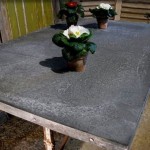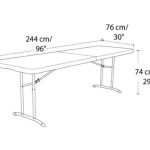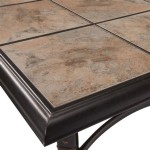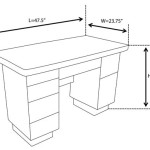Flower Arrangement for Dining Table: A Guide to Elevated Dining Experiences
Flower arrangements on a dining table transcend mere decoration; they contribute significantly to the ambiance and overall experience of a meal. A thoughtfully chosen and skillfully arranged floral centerpiece can elevate a simple family dinner or transform a formal gathering into a memorable event. The purpose of this article is to explore the important considerations involved in selecting and creating flower arrangements perfectly suited for a dining table, ensuring aesthetic appeal and functional practicality.
The selection process goes beyond simply choosing visually pleasing flowers. Factors such as the table's size and shape, the room's decor, the occasion, and the practicality of the arrangement during a meal are all crucial considerations. A well-executed flower arrangement complements the dining space and enhances the dining experience, without obstructing views, overwhelming the area, or interfering with conversations.
Considerations for Dining Table Flower Arrangement
Several key elements influence the effectiveness of a dining table flower arrangement. Paying attention to these details allows for the creation of a centerpiece that enhances the dining experience, rather than detracting from it.
Size and Scale: The size of the arrangement must be proportional to the dimensions of the dining table. A large, elaborate arrangement may overwhelm a small, intimate table, while a tiny arrangement may be lost on a large, expansive surface. It is important to strike a balance that complements, rather than dominates, the table.
For smaller, round tables or square tables accommodating two to four people, a compact arrangement is generally advisable. A single, impactful bloom in a minimalist vase, or a small cluster of flowers in a low bowl, can be sufficient. The goal is to add a touch of elegance without consuming valuable space.
Larger, rectangular tables require a more substantial arrangement, or possibly multiple smaller arrangements spaced strategically along the length of the table. A long, low centerpiece that runs parallel to the table's edge can create a sense of flow and continuity. Alternatively, grouping several individual vases of varying heights and flower types can add visual interest.
The height of the arrangement is equally important. Tall arrangements, while visually striking, can obstruct sightlines and hinder conversation. The ideal height is typically below eye level when seated, allowing diners to easily see and interact with one another across the table. Low, horizontal arrangements are often preferred for their unobtrusive nature and ability to create a cohesive visual plane.
Flower Choice and Color Palette: The selection of flowers and the color palette significantly contribute to the overall aesthetic of the arrangement. The choice should reflect the formality of the occasion and the existing decor of the dining room. Consider the style of the room, the tablecloth color, and the dinnerware used.
For formal occasions, classic flowers such as roses, lilies, orchids, and peonies are often appropriate. These flowers exude elegance and sophistication, and are available in a wide range of colors. A monochromatic arrangement, featuring varying shades of a single color, can create a refined and polished look. Alternatively, a complementary color scheme, using colors that are opposite each other on the color wheel, can add a vibrant and dynamic touch.
For more casual gatherings, a wider range of flower choices is acceptable. Sunflowers, daisies, wildflowers, and greenery can create a relaxed and inviting atmosphere. Consider using seasonal flowers to reflect the time of year and add a touch of natural beauty. A mix of different flower types and colors can create a cheerful and eclectic arrangement, reflecting a more informal setting.
The fragrance of the flowers should also be considered. While a subtle scent can enhance the dining experience, overpowering fragrances can be distracting and even unpleasant, especially during a meal. Avoid heavily scented flowers such as lilies or hyacinths, or use them sparingly. Opt for flowers with a mild, pleasant fragrance, such as freesia or sweet peas, or choose unscented flowers altogether.
Vase Selection and Design: The vase is an integral part of the flower arrangement and should complement both the flowers and the overall aesthetic of the dining table. The vase's shape, size, and material should be carefully considered to ensure a harmonious composition.
For tall, slender flowers, a tall, cylindrical vase is often appropriate. This type of vase provides support for the stems and allows the flowers to cascade gracefully. For shorter, bushier flowers, a low, rounded vase is a better choice. This type of vase allows the flowers to spread out and create a fuller, more compact arrangement.
The material of the vase can also influence the overall aesthetic. Crystal vases exude elegance and sophistication, while ceramic vases offer a more rustic and earthy feel. Glass vases are versatile and can complement a wide range of flower types and styles. Consider the existing decor of the dining room and choose a vase that complements the overall aesthetic.
The design of the vase should also be considered. Simple, minimalist vases are often the best choice, as they allow the flowers to take center stage. Ornate or decorative vases can be distracting and may detract from the beauty of the flowers. Choose a vase that is understated and elegant, allowing the flowers to shine.
Arrangement Styles for Different Occasions
The specific style of the flower arrangement should be tailored to the occasion and the overall atmosphere one wishes to create. Different occasions and events call for different approaches to floral design.
Formal Dinners: Formal dinners typically require a more sophisticated and elegant flower arrangement. Classic flower choices, such as roses, lilies, and orchids, are often appropriate. A monochromatic color scheme, or a complementary color scheme using rich, saturated colors, can create a refined and polished look. The arrangement should be symmetrical and balanced, reflecting the formality of the occasion.
Consider using a raised platform or stand for the arrangement to add height and visual interest. Incorporating elements such as candles, ribbons, or crystals can further enhance the elegance of the arrangement. The vase should be chosen carefully to complement the flowers and the overall aesthetic of the dining table. Crystal vases or silver containers are often appropriate for formal occasions.
Casual Gatherings: Casual gatherings call for a more relaxed and informal flower arrangement. A wider range of flower choices is acceptable, including sunflowers, daisies, wildflowers, and greenery. A mix of different flower types and colors can create a cheerful and eclectic arrangement. The arrangement can be asymmetrical and less structured, reflecting the informal setting.
Consider using more rustic or natural containers, such as wooden boxes, mason jars, or woven baskets. Incorporating elements such as fruits, vegetables, or herbs can add a touch of whimsy and personality to the arrangement. The goal is to create a welcoming and inviting atmosphere that encourages conversation and relaxation.
Holiday Celebrations: Holiday celebrations offer a unique opportunity to create themed flower arrangements that reflect the spirit of the season. For example, a Christmas flower arrangement might incorporate pine branches, berries, and ornaments. A Thanksgiving flower arrangement might feature autumn leaves, gourds, and pumpkins. A Valentine's Day flower arrangement might be filled with red roses and romantic accents.
Consider using holiday-specific containers or embellishments to enhance the theme of the arrangement. For example, a Christmas flower arrangement might be displayed in a red or green vase, adorned with ribbons and ornaments. A Thanksgiving flower arrangement might be displayed in a cornucopia or a rustic wooden container, surrounded by gourds and pumpkins. The goal is to create a festive and celebratory atmosphere that reflects the joy and spirit of the holiday.
Practicality and Longevity of Arrangements
Beyond aesthetics, practical considerations are crucial for a successful dining table flower arrangement. These include factors that ensure the enjoyment of the arrangement without it becoming a burden.
Visibility and Conversation: As mentioned previously, the height of the arrangement is critical to ensure that it does not obstruct views or hinder conversation. Choose a low arrangement or one that is tall but narrow, allowing diners to easily see and interact with one another across the table. Avoid arrangements that are too bulky or sprawling, as they can create a barrier between diners.
Consider the placement of the arrangement on the table. Position it in a way that does not block access to food or drinks. Ensure that it is stable and secure, to prevent it from being accidentally knocked over. The goal is to create a beautiful and functional centerpiece that enhances the dining experience without being a hindrance.
Flower Longevity and Maintenance: Choosing flowers that are known for their longevity can extend the life of the arrangement and reduce the need for frequent replacements. Flowers such as chrysanthemums, carnations, and orchids are known for their long vase life. Preparing the flowers properly can also help to extend their life.
Trim the stems at an angle to allow for better water absorption. Remove any leaves that will be submerged in water, as they can rot and contaminate the water. Use a flower food solution to provide nutrients and prevent bacterial growth. Change the water regularly and remove any wilting or damaged flowers. By following these simple steps, you can help to keep your flower arrangement looking fresh and beautiful for as long as possible.
Consider the environmental conditions of the dining room. Avoid placing the arrangement in direct sunlight or near heat sources, as this can cause the flowers to wilt prematurely. Keep the arrangement in a cool, well-ventilated area to prolong its life. With proper care and maintenance, a well-chosen flower arrangement can bring beauty and enjoyment to the dining table for several days or even weeks.

25 Dining Table Centerpiece Ideas Flower Centerpieces Wedding Fl Tulip

Neutrals Are Natural Flower Arrangements Dining Room Centerpiece Table Centerpieces

Centerpieces And Table Decorations For Every Season Balsam Hill

Appropriate Dining Room Table Flower Arrangement Mummy S Monday Manners Holly Holden

See Ya Winter 57 Easy Ways To Freshen Up Your Home For Spring Dining Room Table Centerpieces Centerpiece

35 Beautiful Flower Centerpieces To Wow Your Guests

Spring Fl Arrangement Step By Decor Gold Designs

33 Extravagant Fl Arrangements For Your Dining Table Room Decor Flower Glass Dinning

Dining Table Orchid Arrangement Preserved Fl Arrangements Silk Flowers

How To Make A Flower Arrangement Vignette Sanctuary Home Decor
Related Posts








